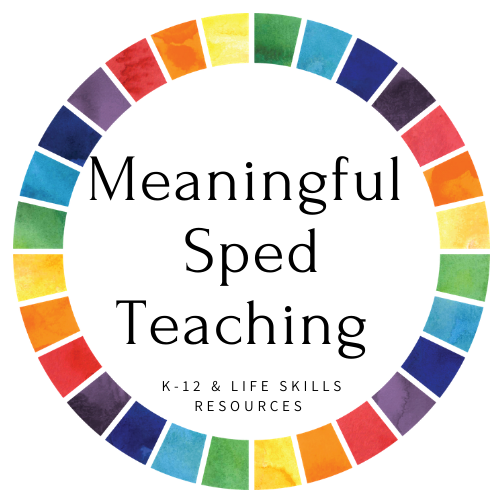In schools, education goes beyond academic subjects—it encompasses the development of essential life skills that students can carry with them into adulthood. One crucial aspect of this holistic approach is teaching personal hygiene. Personal hygiene education equips students with practical skills that promote physical health, boost self-esteem, and foster responsible habits. In this blog post, we will discuss the significance of teaching personal hygiene within schools and explore the key features and benefits of incorporating this vital education into the curriculum. While acknowledging a valuable resource, our focus will primarily be on the importance and impact of personal hygiene education.
1. The Significance of Teaching Personal Hygiene:
Personal hygiene is not solely about cleanliness; it plays a fundamental role in maintaining overall health and well-being. By teaching personal hygiene practices, such as proper handwashing, oral care, bathing, and grooming, schools actively contribute to disease prevention and the cultivation of lifelong healthy habits. Students who understand and practice good personal hygiene are better equipped to lead healthier lives.
2. Practical Learning for Real-Life Situations:
Personal hygiene education offers students practical skills for real-life situations. Teaching students how to properly wash their hands, care for their teeth, bathe regularly, and maintain appropriate grooming habits instills responsibility and self-care. These skills empower students to take ownership of their personal hygiene, promoting long-term well-being and fostering a sense of confidence and self-esteem.
3. Interactive Activities for Engaging Learning:
Engaging students in interactive activities enhances their understanding of personal hygiene. Hands-on experiences, such as interactive games, role-playing scenarios, and multimedia resources, deepen students' knowledge and engagement with hygiene practices. By making the learning process enjoyable and interactive, educators can ensure that personal hygiene education remains impactful and memorable.
-
Hygiene Stations: Set up hands-on hygiene stations where students can practice proper handwashing techniques using soap, water, and hand sanitizers. Provide visual aids and step-by-step instructions to guide them through the process.
-
Interactive Games: Incorporate interactive games that teach hygiene practices in a fun and engaging way. Examples include online quizzes or interactive apps that cover topics like tooth brushing, hand hygiene, and personal grooming.
-
Role-Playing Scenarios: Create role-playing scenarios where students can act out different hygiene-related situations. This could involve practicing how to properly cover a sneeze or cough, demonstrating handwashing techniques, or showing proper etiquette for using public restrooms.
-
Multimedia Resources: Utilize multimedia resources such as videos, animations, and interactive presentations to reinforce hygiene concepts. These resources can provide visual demonstrations of proper hygiene practices and engage students through interactive elements.
-
Sensory Materials: Incorporate sensory materials like scented soaps, textured toothbrushes, or tactile models to provide a multi-sensory experience while learning about hygiene. These materials can help students with sensory sensitivities or different learning styles engage more effectively with the topic.
-
Field Trips: Organize field trips to places that promote hygiene awareness, such as local health clinics, dental offices, or even water treatment facilities. These hands-on experiences allow students to see hygiene practices in action and understand their importance in real-world settings.
-
Guest Speakers: Invite guest speakers, such as healthcare professionals or hygiene experts, to share their knowledge and experiences with the students. They can provide valuable insights, answer questions, and offer practical tips for maintaining good hygiene.
-
Group Activities: Engage students in group activities that require collaboration and problem-solving related to hygiene. For example, create a hygiene-themed scavenger hunt where students have to find and identify different hygiene products or create hygiene-related artwork as a group.
-
Life Skills Lessons: Integrate hygiene practices into broader life skills lessons. For instance, teach students about time management by incorporating tooth brushing and personal grooming routines into their daily schedules.
-
Visual Supports: Use visual supports like visual schedules, social stories, and task analysis charts to break down hygiene routines into manageable steps. These visual aids can assist students in understanding and following proper hygiene practices independently.
Remember, hands-on experiences are essential for deepening students' knowledge and engagement with hygiene practices. By incorporating interactive games, role-playing scenarios, multimedia resources, and other creative approaches, educators can make hygiene education more enjoyable, meaningful, and effective for students with special needs.
4. Digital and Printable Options for Flexible Teaching:
In the digital age, personal hygiene education can leverage technology to reach students effectively. Digital resources provide interactive elements, engaging visuals, and multimedia components that enhance the learning experience. Additionally, printable materials offer flexibility, allowing educators to cater to various teaching environments and reach students who may not have reliable access to digital resources. The availability of both options ensures inclusivity and adaptability in delivering personal hygiene education.
5. Real-World Connections: Job Skills and Money Skills:
Personal hygiene education can extend beyond hygiene practices alone. It provides an opportunity to teach important job skills and money skills related to hygiene products. Introducing concepts such as inventory management, job skills, and money skills through the lens of personal hygiene prepares students for future success. Understanding the organizational aspects of categorizing hygiene products and their financial implications provides practical knowledge that can be applied in real-world situations.
Teaching personal hygiene within schools is an investment in students' overall well-being and their ability to navigate the world with confidence. By incorporating personal hygiene education into the curriculum, educators empower students with practical life skills, nurture healthy habits, and boost self-esteem. While our Hygiene Identification Bundle serves as a comprehensive resource to support these efforts, its true value lies in aligning with the importance of personal hygiene education itself.
Let's embrace the opportunity to transform the way we teach personal hygiene and equip our students with essential life skills. Together, we can foster healthier lives, promote self-confidence, and empower our students to thrive both inside and outside the classroom. Personal hygiene education is a powerful tool for shaping a future generation that values and prioritizes their well-being.







